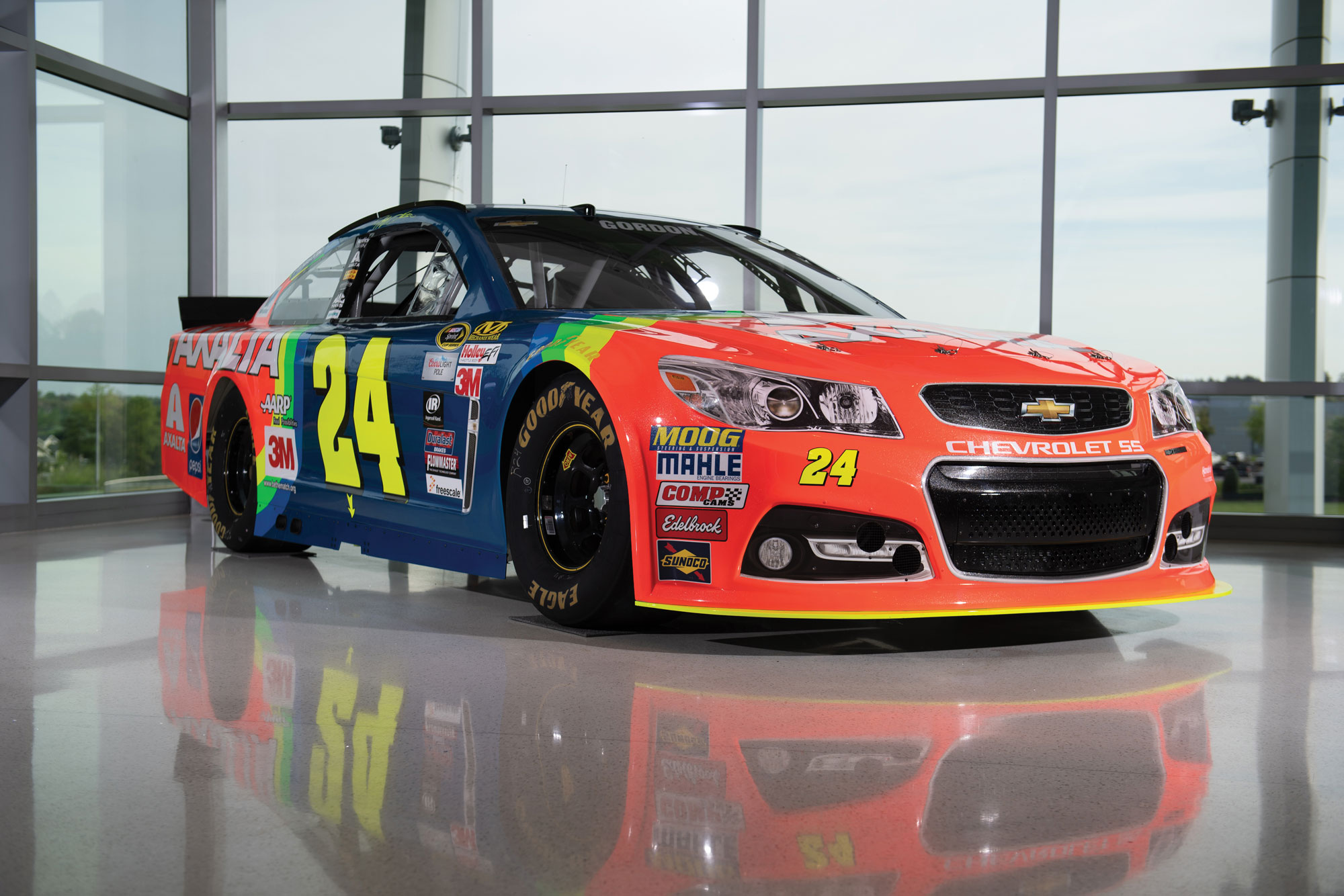Chassis Number: HMS0114861
Jeff Gordon’s iconic No. 24 DuPont Rainbow livery is the winningest paint scheme in NASCAR history, with 52 wins at 17 tracks, three championship titles, and more than 10,000 laps led. After “Fire and Flames” became the norm for Gordon’s No. 24 in 2001, the Rainbow only made one more appearance until Gordon’s final season in 2015, when this car was painted in the signature livery for one final ride at the Bristol night race. The evening was a highlight of Gordon’s retirement tour for the four-time champion and his adoring fans alike.
Since retirement, the car has been meticulously restored to the condition in which it sat on the starting grid that night in Bristol by the Hendrick Motorsports Certified Race Cars team of experts using new, authentic, period-correct parts. The car’s engine is the top-of-the-line Hendrick Motorsports-certified Chevrolet “R07” fuel-injected race engine, good for 725 horsepower. Inside, the cabin has been furnished with a new NASCAR-spec safety cell, fire-suppression system and carbon-fiber dash complete with all the proper specifications preferred by Jeff Gordon himself.

